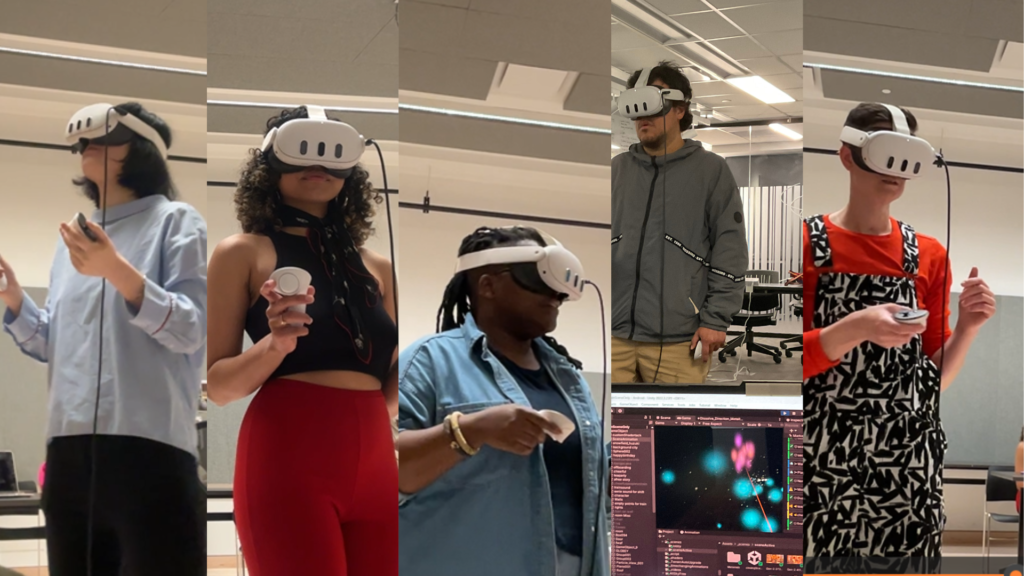What she carried – Quotidian Politics of the Partition of 1947
Aliza Habib
Advisor: Sarah Ibrahim
Archiving oral history of the Partition as a communal tool to understand grief and generational trauma – through emerging tech

Abstract
A VR experience exploring the intricate web of generational trauma with objects as symbolic keepsakes carrying the echoes of ancestral pain through time.
This project constitutes a study on the generational trauma passed down by witnesses of traumatic events. Ordinary objects transported across the border serve as metaphors for the grief perpetuated across generations, often remaining unspoken for decades.

Technical Details
Unity
Blender
Procreate
EmberGen
Garage band
Ableton live
VR/AR

Research/Context
The Partition of 1947 divided the subcontinent into three countries: India, Pakistan, and Bangladesh (1971), following the British rule that lasted 90 years. What started with seemingly innocent trade resulted in mass killing, violence, and destruction spanning four generations as the British hastily left the region, drawing careless borders based on identities and religion.
To evade religious violence, forced conversions, and massacres, a mass migration took place, resulting in the largest displacement of people in history. Books and reports show violence from all religions, with systemic rape and brutality against women as a way to ‘purify’ bloodlines. What unfolded in 1947 sends shivers down my spine. While statistics show us the scale of the event, my focus is on the unseen aspects: what they carried and the stories tied to them, threads connecting them to what used to be home.
A fundamental aspect of my project's conceptual framework lies in embracing multiple narratives and recognizing memory as a fluid medium influenced by time and emotions. Rather than seeking factual accounts, my aim has been to capture and document the nuanced emotions such as grief and hope that accompany these memories. It is not a recreation of individual experiences, nor does it aim to simulate grief or represent trauma. While it endeavors to give shape or form to the inherited trauma, it acknowledges the limitations in fully translating such profound feelings.
Further Reading
The problem I am addressing for this project revolves around the loss of stories, archival history, and generational trauma stemming from this event spanning across the entirety of the subcontinent. However, beyond the geopolitical ramifications, the Partition resulted in harrowing human suffering, trauma, and the loss of countless personal narratives and cultural heritage. Today, as individuals who directly experienced the Partition reach old age, there is a pressing need to preserve their stories and memories before they are lost forever. These individuals possess firsthand accounts of the events surrounding the Partition, including the emotional toll it exacted on them and their families. Their narratives provide invaluable insights into the human experience during this tumultuous period of history. Furthermore, the trauma of the Partition continues to reverberate through subsequent generations, influencing social and cultural dynamics in South Asia.
By documenting and preserving the stories of those who lived through this historic event, we not only honor their experiences but also gain a deeper understanding of the long-term impact of political upheaval and displacement on individuals and societies.
As I go through this research, I aim to open a space for discourse and reflection.
To heal grief, stories must be told, shared, and passed down to understand our trauma and the hope we carry as a generation.